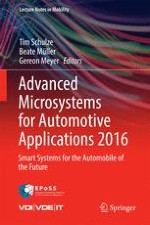This edited volume presents the proceedings of the AMAA 2015 conference, Berlin, Germany. The topical focus of the 2015 conference lies on smart systems for green and automated driving. The automobile of the future has to respond to two major trends, the electrification of the drivetrain, and the automation of the transportation system. These trends will not only lead to greener and safer driving but re-define the concept of the car completely, particularly if they interact with each other in a synergetic way as for autonomous parking and charging, self-driving shuttles or mobile robots. Key functionalities like environment perception are enabled by electronic components and systems, sensors and actuators, communication nodes, cognitive systems and smart systems integration. The book will be a valuable read for research experts and professionals in the automotive industry but the book may also be beneficial for graduate students.
